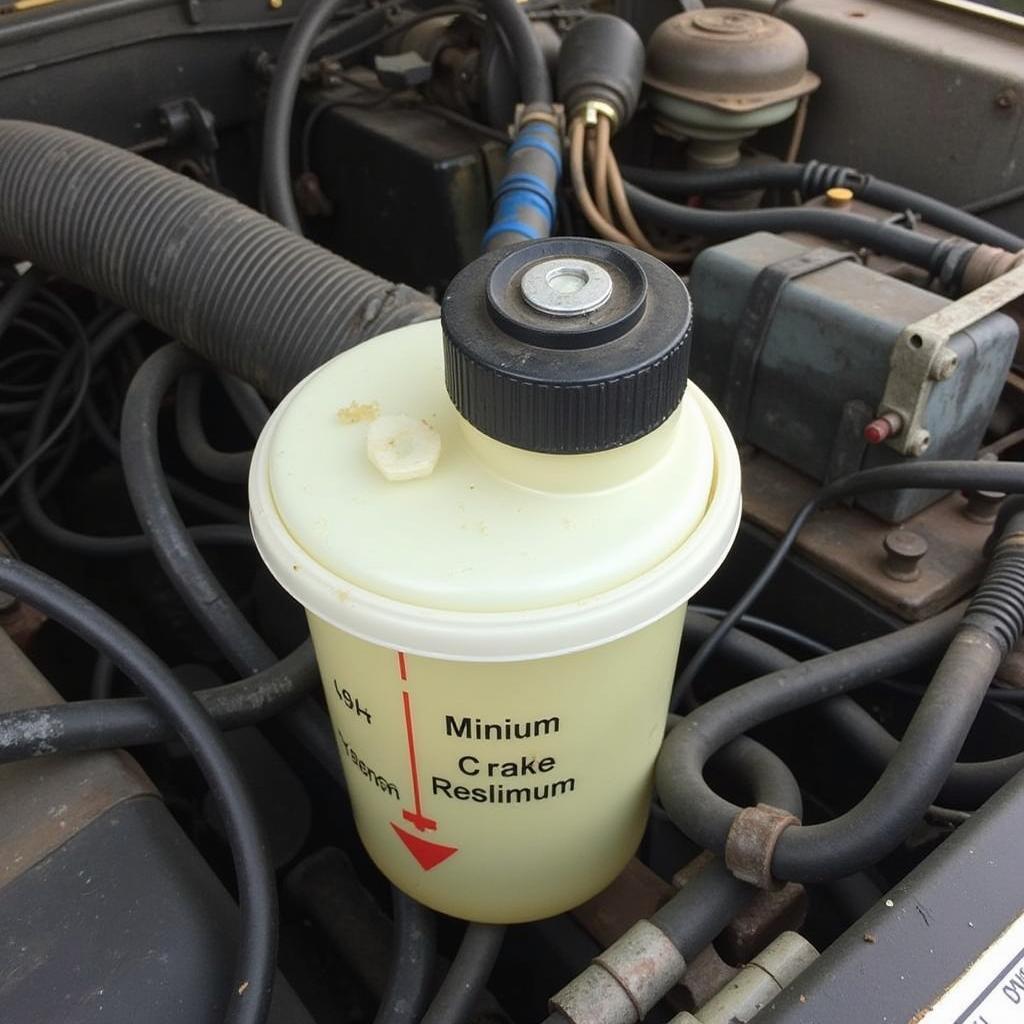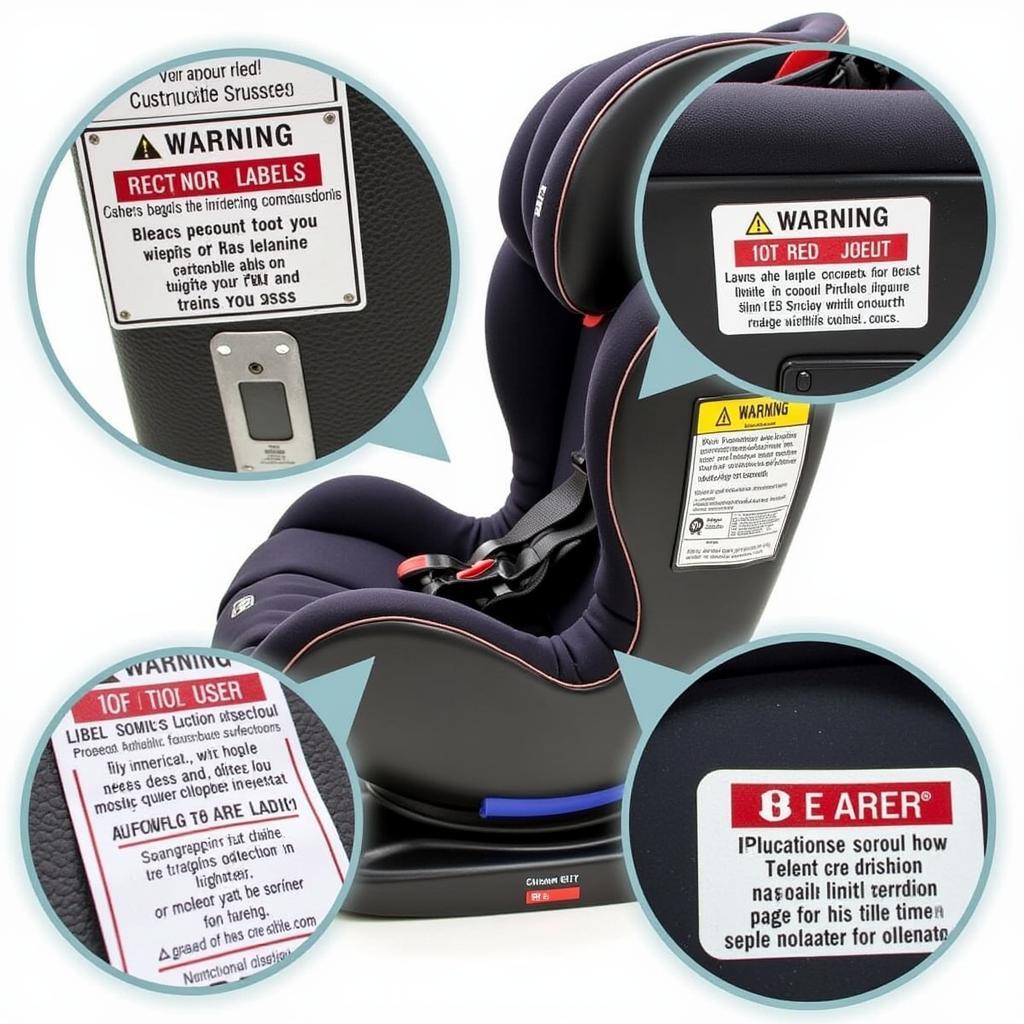If you’re experiencing a glowing brake warning light in your 1978 Dodge Aspen, particularly when you hit the brake pedal, you’re not alone. This is a common issue faced by classic car owners, and it’s essential to address it promptly for your safety and the car’s well-being. While the sight of a warning light can be alarming, it’s often a solvable issue with a bit of troubleshooting.
This article will guide you through the possible causes and solutions for a brake warning light issue in your 1978 Dodge Aspen. Remember, while this guide provides valuable information, consulting a qualified mechanic for a hands-on diagnosis is always recommended for any brake-related concerns.
Understanding Your Aspen’s Brake Warning Light
The brake warning light on your dashboard is designed to alert you to potential problems within your braking system. It can indicate a range of issues, from a simple low brake fluid level to more complex problems with the master cylinder or brake lines.
In your 1978 Dodge Aspen, the brake warning light illuminating when pressing the pedal suggests a specific set of issues often related to hydraulic pressure within the braking system.
Common Causes and Solutions
Let’s delve into the common culprits behind this issue and how to address them:
1. Low Brake Fluid
The most common reason for a brake warning light, especially when it illuminates when the pedal is pressed, is low brake fluid. Brake fluid is the lifeblood of your braking system, transmitting force from the pedal to the wheels.
Solution:
- Check the brake fluid level. Locate the brake fluid reservoir under the hood (refer to your owner’s manual for the exact location).
- Add the correct type of brake fluid if the level is low. Your owner’s manual will specify the recommended DOT rating.
- Inspect for leaks: If the fluid level is consistently low, you likely have a leak. Look for signs of fluid around the master cylinder, brake lines, and near the wheels.
 1978 Dodge Aspen Brake Fluid Reservoir
1978 Dodge Aspen Brake Fluid Reservoir
2. Worn Brake Pads
Worn brake pads can also trigger the warning light, especially as they thin down and require more fluid to engage.
Solution:
- Inspect your brake pads. If they are worn down to the metal indicators, it’s time for a replacement.
3. Air in the Brake Lines
Air in the brake lines can compress, leading to a spongy brake pedal feel and reduced braking efficiency.
Solution:
- Bleed the brake lines. This process involves removing air bubbles from the brake lines. If you’re comfortable with car maintenance, you can find instructions online or in a repair manual.
4. Failing Master Cylinder
The master cylinder is the heart of your braking system, responsible for pressurizing the brake fluid. If it’s failing, it may not generate enough pressure, triggering the warning light.
Solution:
- Inspect the master cylinder for leaks or damage. If you suspect a master cylinder issue, seek professional help for diagnosis and repair.
When to Seek Professional Help
While some brake issues can be addressed with basic DIY maintenance, it’s crucial to recognize when professional help is necessary:
- You’re uncomfortable working on brakes: Brakes are critical for safety, so if you’re not comfortable with the repair, it’s best to leave it to the experts.
- The problem persists after basic troubleshooting: If you’ve checked the fluid level, inspected the pads, and the issue remains, it’s time for a professional diagnosis.
- You suspect a serious issue: Signs like a leaking master cylinder, grinding noises, or a complete loss of braking power require immediate professional attention.
Conclusion
A brake warning light on your 1978 Dodge Aspen, particularly when pressing the pedal, is a clear signal to investigate your braking system. By understanding the common causes and solutions outlined in this guide, you can take the necessary steps to ensure your classic car remains safe and roadworthy.
Remember, while this information is valuable for initial troubleshooting, a professional mechanic should always address any persistent or complex brake-related concerns.

